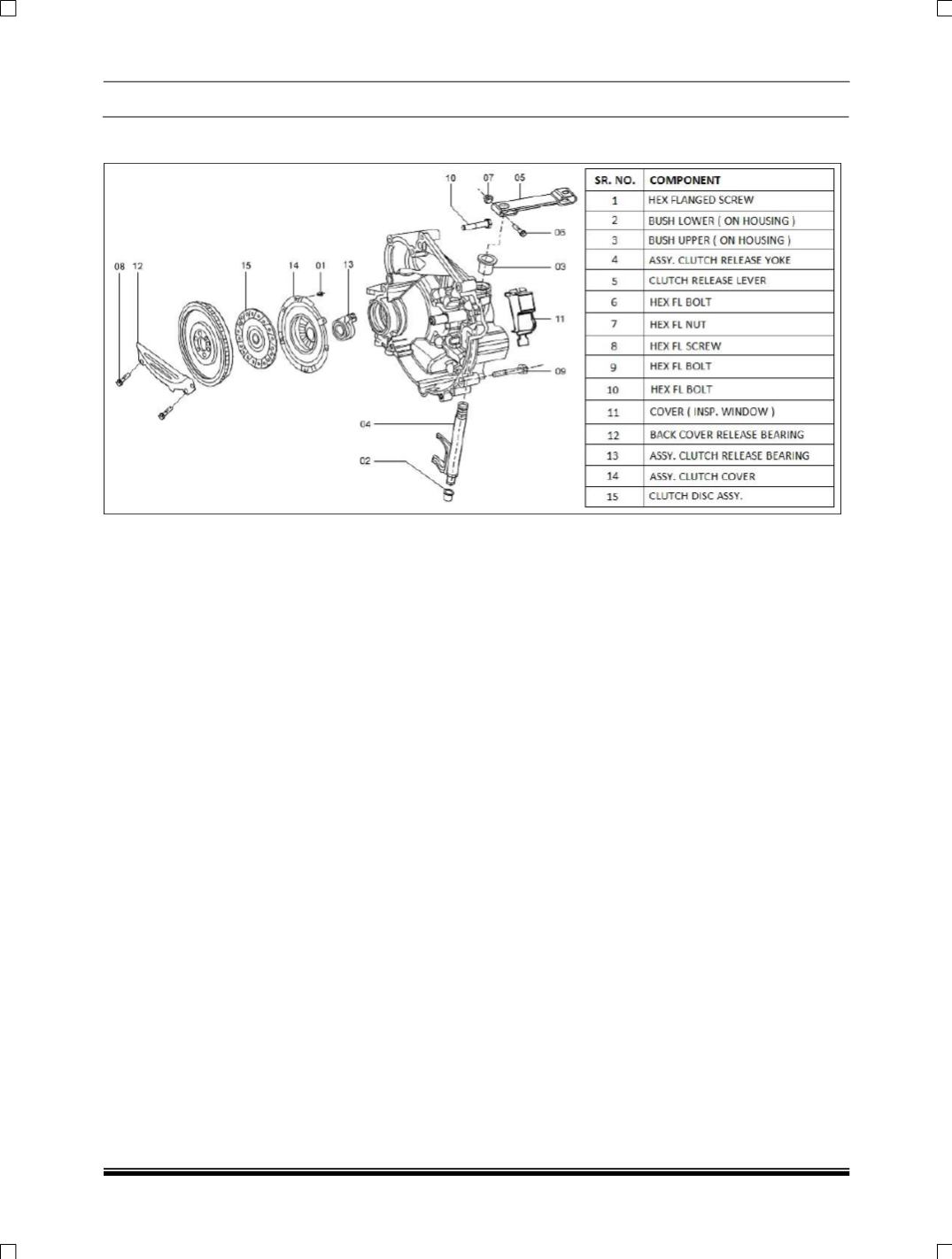
DRIVETRAIN-TA65 Star
21
5.6. B. CONSTRUCTIONAL DETAILS
Clutch is a mechanism interposed between engine
and the Transaxle which enables engine power as
well as torque of the engine to be transmitted to
the transaxle through friction drive. When clutch
pedal is depressed the clutch is disengaged and
therefore motion and power flow from engine to
Transaxle and hence to road wheels is
disconnected.
It is a single disc dry friction type clutch having 200
mm dia. clutch disc. Clutch pressure plate
assembly is diaphragm spring type. Clutch
actuation is through mechanical linkages (cable).
5.6. C. FACTORS AFFECTING CLUTCH
WEAR
The clutch is designed to give maximum life under
most severe conditions when handled carefully.
However, while in operation, clutch lining is
subjected to wear. Apart from this the extent of
wear also depends on following.
DRIVING
Following driving conditions will affect the
performance of the clutch.
i. Clutch riding
Using clutch pedal as foot rest by keeping foot
constantly on pedal while driving will cause partial
clutch disengagement. It will result in slipping of
the clutch disc and premature failure of the clutch.
ii. Permitting the clutch to slip too long
Half clutch driving and thereby permitting the
clutch purposely to slip too long will have the same
result as above.
iii. Permitting the clutch to jerk
Sudden clutch engagement at higher engine speed
specially while moving out the stuck car will cause
severe instantaneous clutch loading, resulting in
clutch slippage and burning of the lining locally.
Starting the car in first gear under such conditions
will avoid such problem. Always start the car in first
gear.
iv. Restarting on gradient:
While restarting the car on gradient, make use of
parking brake. Half clutch driving while restarting
on the gradient will cause premature damage to
clutch.


